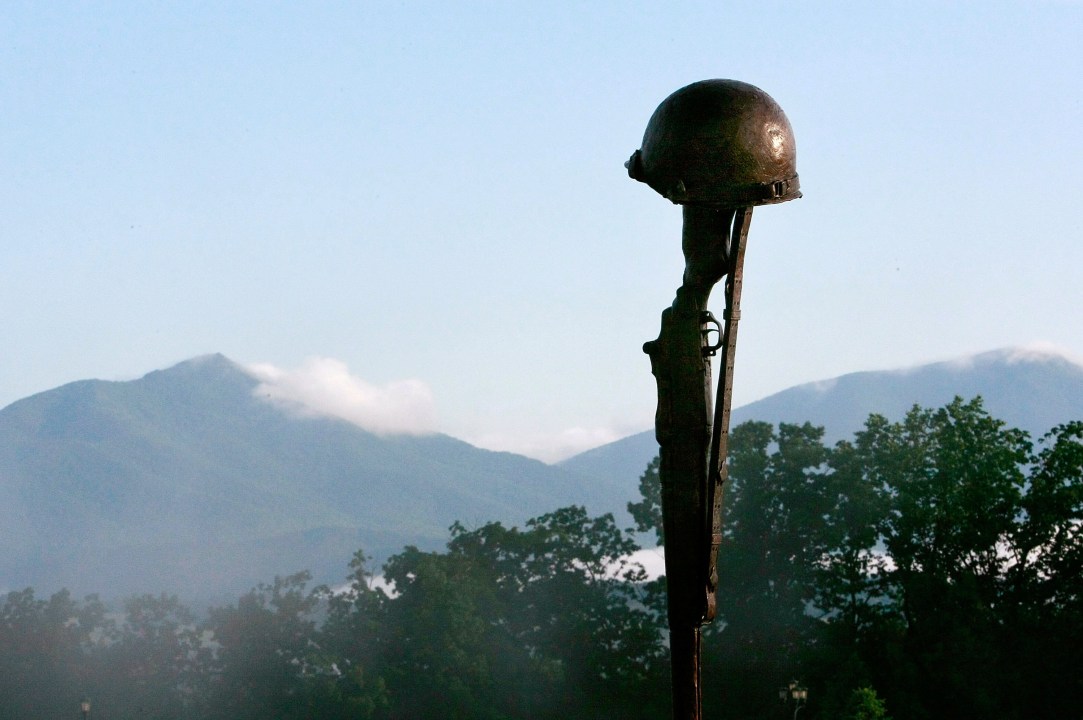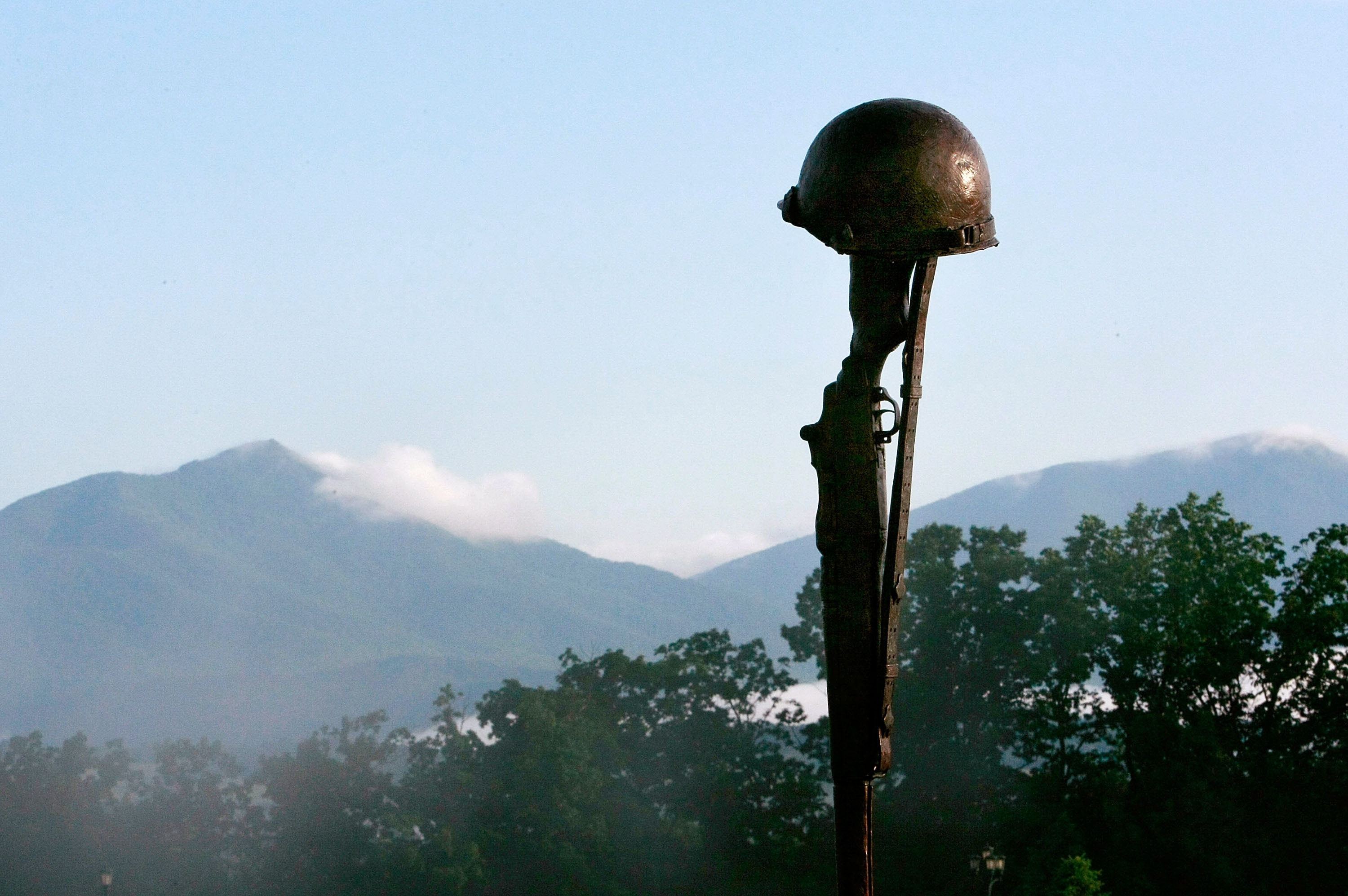So, for the third time in the last four American elections it looks as though this contest is gonna be a close one. As in 2004, however, the narrow-but-significant advantage still lies with the incumbent President. Indeed it is possible that this is one of those rare occasions in which the electoral college actually hurts the Republican candidate.
Be that as it may, the United States remains pretty evenly divided between its Blue and Red teams. Steven Pinker delves into history and anthropology in an attempt to explain why, as he puts it, “ideology and geography cluster so predictably?”
As you might expect he cites David Hackett Fischer’s masterpiece, Albion’s Seed, (still one of the most important interpretations of American history):
The North was largely settled by English farmers, the inland South by Scots-Irish herders. Anthropologists have long noted that societies that herd livestock in rugged terrain tend to develop a “culture of honor.” Since their wealth has feet and can be stolen in an eye blink, they are forced to deter rustlers by cultivating a hair-trigger for violent retaliation against any trespass or insult that probes their resolve. Farmers can afford to be less belligerent because it is harder to steal their land out from under them, particularly in territories within the reach of law enforcement. As the settlers moved westward, they took their respective cultures with them. The psychologist Richard Nisbett has shown that Southerners today continue to manifest a culture of honor which legitimizes violent retaliation. It can be seen in their laws (like capital punishment and a stand-your-ground right to self-defense), in their customs (like paddling [ed: ie, smacking] children in schools and volunteering for military service), even in their physiological reactions to trivial insults.
Moreover, as Pinker notes, the echoes of the Frontier can still be heard in contemporary American politics even though the Frontier closed more than a century ago. That is, the idea of the west still has some resonance and helps explain or inform, in terms of a kind of inherited folk memory, some of the political trends we may discern in today’s America.
Still, there are other forces at work too. Neither the south nor the west was ever dominated by heavy industry. No southern or western city (other than Los Angeles or San Francisco) ranked in the ten most populous cities in America before 1960. As late as this, more people lived in Baltimore than Houston.
It should not, therefore, be surprising that neither the south nor the west developed infrastructure – in terms of social housing and such like – to accommodate mass urbanisation nor as generous a safety-net to cope with the consequences of industrial decline. Moreover, the absence of heavy industry south of the Mason-Dixon line and west of the Mississippi ensured the labour movement never had as much influence on city and state politics in the south and west as it once did in the north-east and mid-west. This too helps account for south and west’s lesser emphasis on collective action or social solidarity or, for that matter, equality of either outcome or opportunity.
So while it’s certainly true that the various strands in American culture owe something to patterns of immigration and settlement these alone are not enough to explain why some states are so red and others so blue. (We should also be wary of forgetting that, actually, almost all states are really purple: Democrats win millions of votes in the south and west just as Republicans still win millions of votes on the east and west coasts.)
This is America, yo, so race matters too. Nixon’s Southern Strategy exploited a rich seam of resentment that’s not yet exhausted (though time is running out on the Win With White Folks approach). In the Deep South and Appalachia this manifested itself as a fear that liberating – in an economic as well as a political sense – blacks could only hurt working class whites who were not, incidentally, necessarily doing so very well for themselves as it was. And if the federal government could impose civil rights legislation, what else might it not feel like imposing some day in the future?
Gun control is another good example. By defeating Al Gore in 2000 the good people of Tennessee helped remove gun control from future presidential elections. Nevertheless, those Americans who insist upon their Second Amendment rights are not wrong to suppose that many other Americans would, if they had their way or could find a path towards doing so, severely limit those rights. Frankly, this includes the current President too.
That’s some of the reason why Obamacare is unpopular too. The mandate – purchase health insurance or pay the federal government a fine – smacks of big government bullying. Nor does the fact the mandate began life as an idea sponsored by the conservative Heritage Foudation in Washington change that. Nor does it matter that if Obamacare actually works (much too soon to say!) many of those people most likely to benefit from it are the same working-class whites in the south (and, to a lesser extent the west) who dislike Obama the most.
One of the things Thomas Frank’s What’s the Matter with Kansas? thesis struggled to understand properly is that cultureis often more important than economics. What’s more, the people in the poorest states are also the people who may be least susceptible to political promises that voting for Candidate A will bring happier, sunnier, economic times. They’ve heard that often enough and dawn still hasn’t broken. On the other hand, the perceived threat of losing cherished cultural rights is more immediately and more obviously powerful than the hypothetical promise of economic advancement.
This is not just a question of left vs right either. In the 2008 Democratic primary Obama was man-handled by Hillary Clinton in the Redneck Arc that sweeps down the Appalachian Mountains and west towards the Ozarks, taking in parts of south-west Ohio and much of Kentucky as it goes. Race doubtless had a part to play in that contest too but there was more to it than that. Obama – a professorial, urban, northern liberal – just isn’t the kind of Democrat who plays well in West Virginia, Tennessee or Arkansas. But Democrats can win in these states: Montana, Kentucky, West Virginia and Arkansas all have Democratic governors. These politicians, however, tend to be from the party’s populist wing.
What’s more, this region is also home to the American-Americans. Some seven percent of census respondents decline to state their ethnic ancestry and instead write-in “American”. These people are most-highly concentrated in the country-music-and-college-football belt running in the Southern Highlands and either side of the Appalachians. Not coincidentally, these are the parts of the United States most heavily populated by the Scots-Irish and their descendents. (Their ur-Americanness is one reason, incidentally, why there’s not much of a Scottish lobby in America).
It ain’t – or shouldn’t be – a surprise that the American-Americans are liable to mistrust other Americans who, at least in their eyes, define themselves along ethnic or racial lines. These are the people who, as Jim Webb put it in his minor-classic Born Fighting, breed the boys who are disproportionately likely to fight and die in America’s wars.
You might think all this a long way from the Old Country and, in some measures, you’d be right. It’s hard to look at contemporary Scotland and Ulster and see these places as exemplars of rugged individualism. Nevertheless, if you look more closely you can still see some parallels between “redneck” culture in America and working-class protestant culture in Glasgow and Belfast.
Here too you can find a working-class culture that makes claim to a better, purer birthright than that afforded less fortunate catholic or otherwise foreign souls. A culture that boasts “We are the people” yet fears it’s not only misunderstood by the establishment but also actually under attack. The Orange Order and the Glasgow Rangers are, in at least some ways anyway, long-distant cousins of the American hillbilly culture. (Glasgow must be the “most Merle Haggard” city in Britain, too)
These people often horrify “right-thinking” metropolitan folk in this country just as surely as the rednecks appall the New York Times on the other side of the Atlantic ocean. In Scotland this cultural resentment hasn’t yet found a real political home (though, of course, it has one in Ulster) and perhaps the parallels ought not to be stretched too far. Nevertheless I think they exist and are worth paying attention to.
Back to the United States: even with the caveat that all states – even Oklahoma and Vermont – are more purple than the map suggests there are good reasons for the divide between red and blue and at least some of these date back to the earliest years of the Republic. That too is something worth trying to understand.








Comments